The size of cruise ships, container vessels and gas carriers is constantly increasing, as is the importance of stakeholder management in complex situations. Against this background, Richard Janssen, managing director of Boskalis subsidiary SMIT Salvage, describes how the company completed the first-ever salvage project involving an Ultra Large Container Ship.
One of the largest salvage jobs of recent times was the Maersk Honam, which caught fire while sailing in the Arabian Sea. Why was this contract awarded to SMIT Salvage?
“Before I answer that question, I would like to recall that five crew members tragically lost their lives in this incident. They were very much on our mind during the response operation. Obviously, we all go to sea to do a job and we want to return home safely. At the time of the incident, Maersk reached out to us immediately and, after we put our initial response together, we were able to confirm within 45 minutes when our fire-fighting (FiFi) tugs could reach the location and where we could mobilize our FiFi/support tugs with our salvage experts from the Netherlands, the Middle East and Singapore. We had all the charter flights lined up to fly our salvage team and equipment in. Our answer for Maersk was ‘You can count on us, we’ll be there!’”
“We were asked whether we could work together with Maersk’s co-owned salvage operator Ardent. Salvage is a small industry so we know many of the Ardent colleagues and it didn’t take us long to put a joint team together. Competition aside, we all understood how serious this incident was and we wanted to do everything in our power to help Maersk. This would have been a challenging project for any single company to tackle. If SMIT Salvage and Ardent couldn’t get the job done jointly, who could?”
“Following the contract award we brought in even more support craft and personnel in anticipation of the next phase of our response after boundary cooling. We also arranged for satellite and aerial reconnaissance to determine the extent of the blaze.”
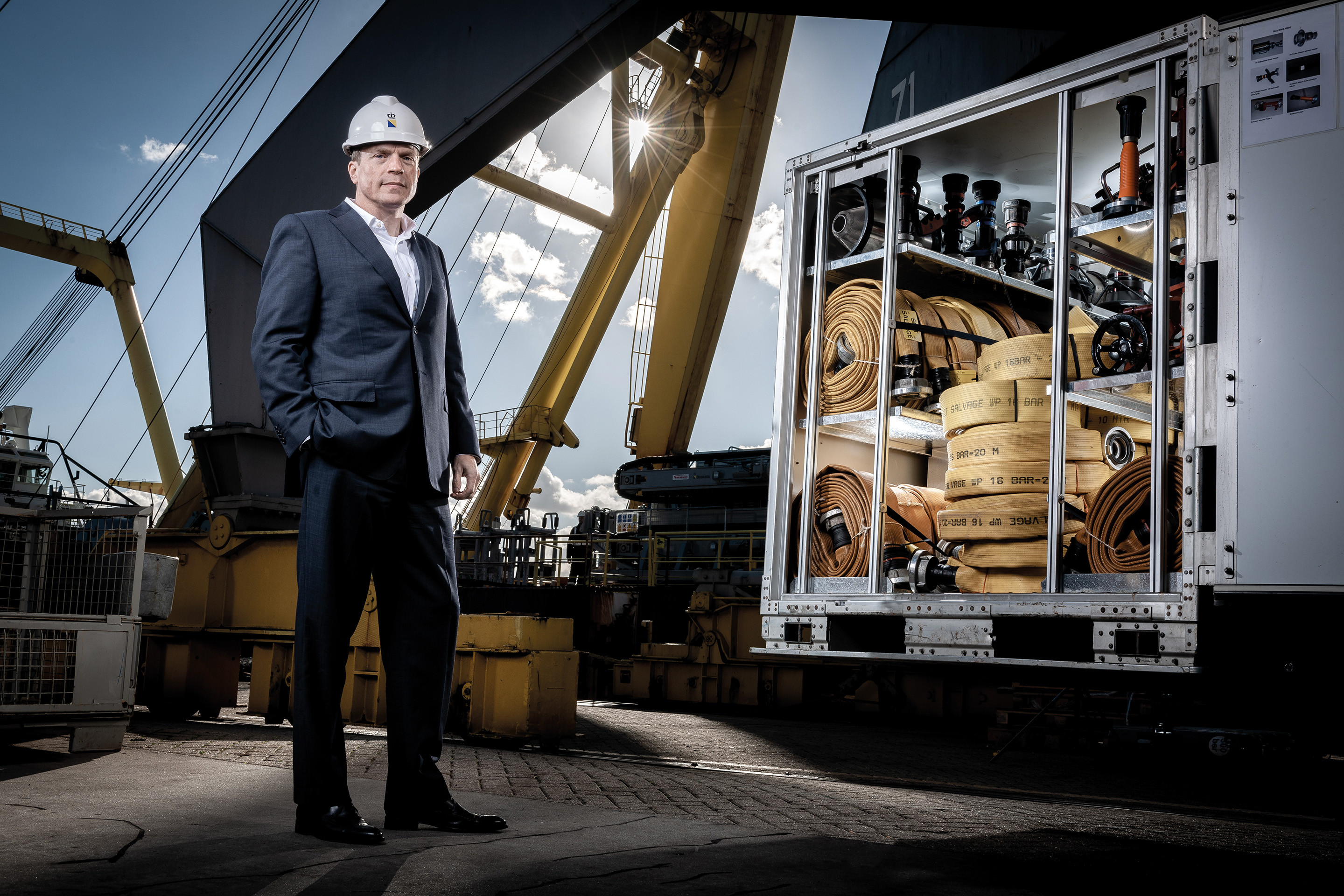
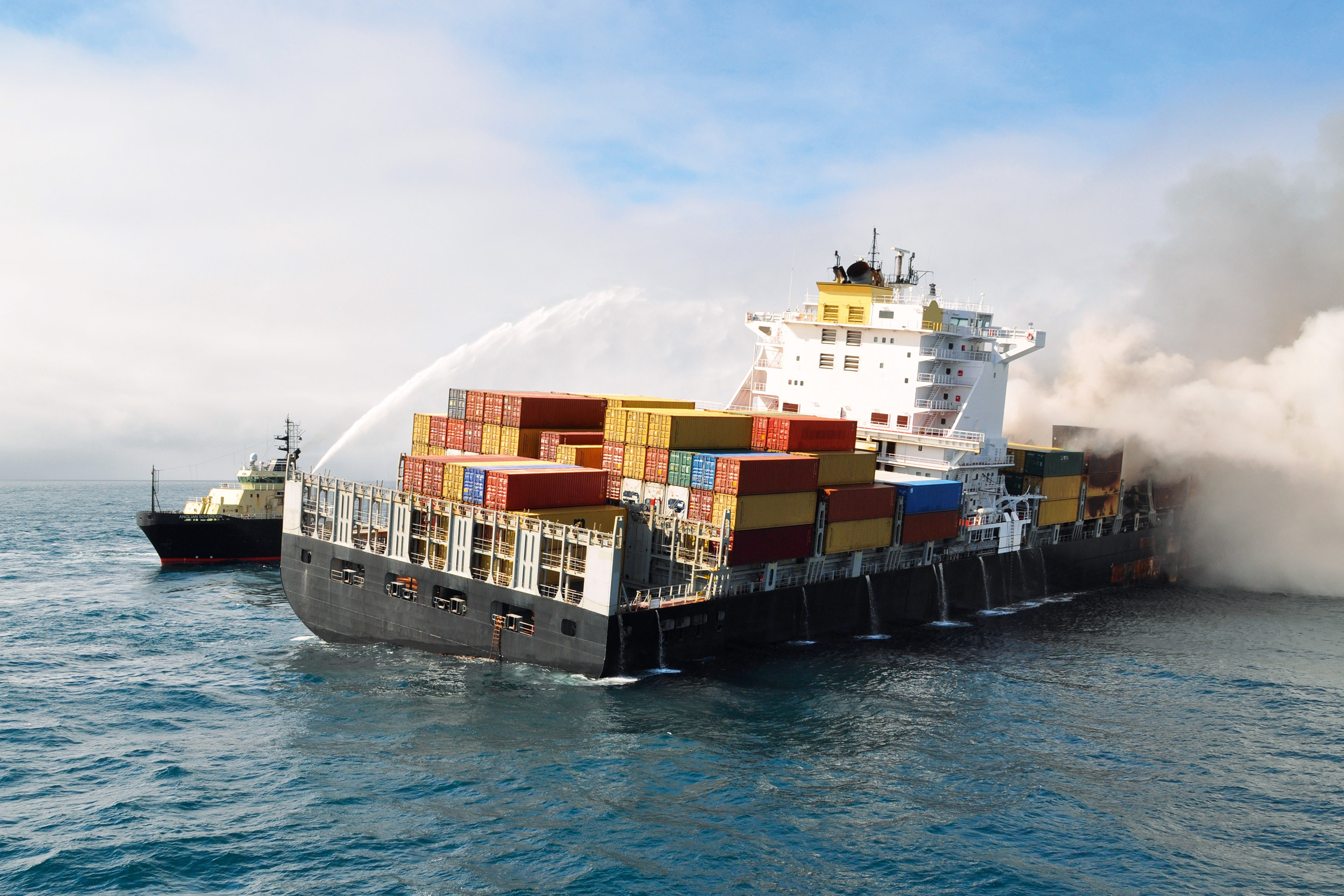
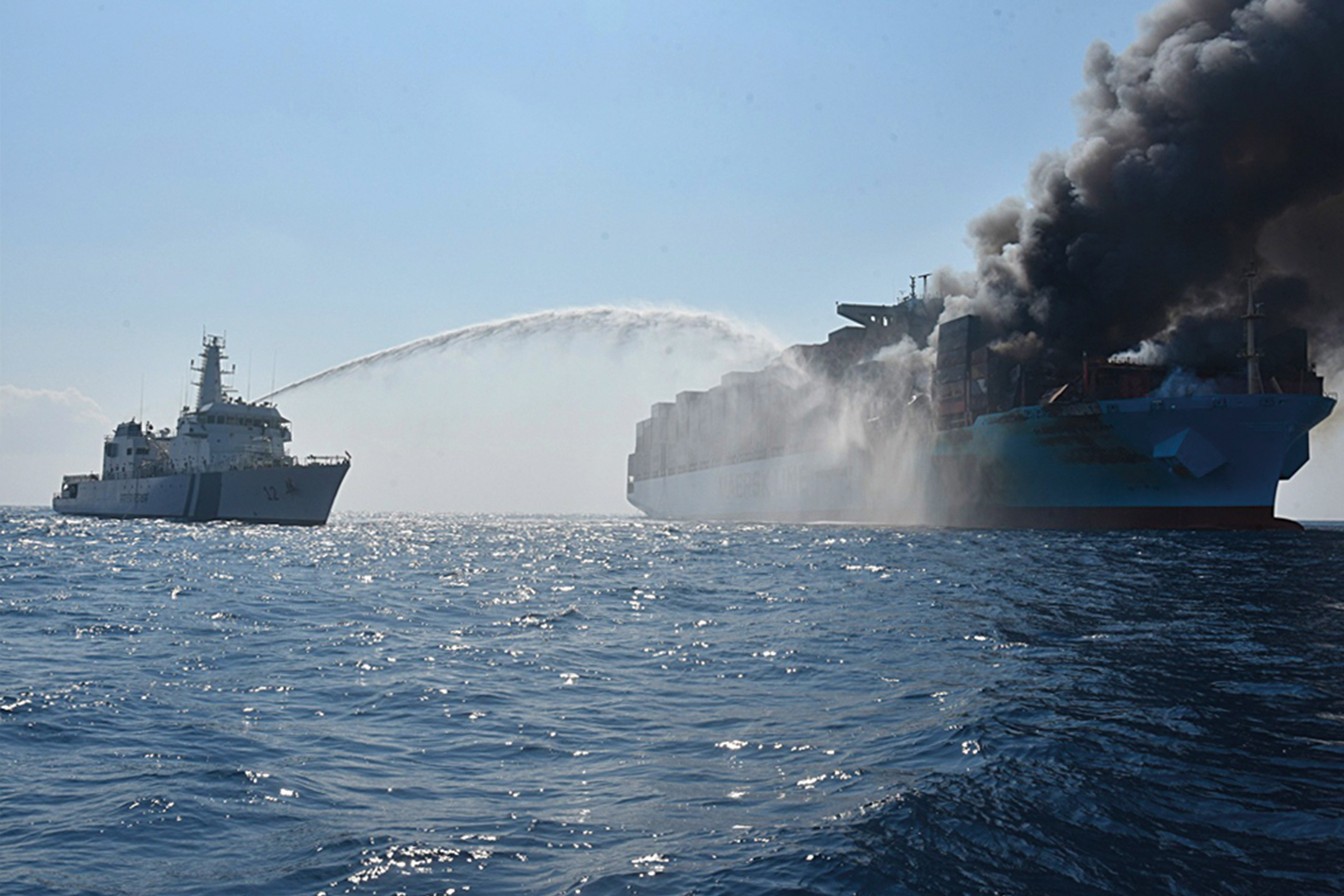
Did you worry the vessel was too damaged to be saved?
“Even for a company like SMIT Salvage, the number of people and vessels involved was exceptional. Maersk helped a great deal with its professional and constructive approach, and by providing accurate, detailed information promptly. For example, it was crucial to monitor the stresses on the ship’s hull during the boundary cooling and fire-fighting; there is a limit to the amount of FiFi water that can be collected in the hold of the vessel. This means that a systematic approach and close cooperation are required from salvage experts. We also had to consider where we could take the vessel, not least because facilities were needed for the storage and transshipment of the cargo and to avoid further disruption.”
“After an assessment of the situation, it was decided to try and isolate the fire before it reached the accommodation area given that we couldn’t save the first two or three holds. Some of our efforts were aimed at making sure the bunker tanks didn’t catch fire and stopping the fire spreading through the accommodation: we weren’t at all sure what we could save if the fire spread further.”
Saving the vessel was the start but were there other major challenges facing SMIT Salvage?
“There certainly were: the next daunting question was where to take the vessel. With a length of 350 meters, a beam of more than 50 meters and containers stacked up to 9 levels above the deck, the sheer size of the Maersk Honam is staggering. This is where our network and prior experience with organizing places of shelter or ports of refuge was vital. As our salvage teams was fighting the fire and the onshore team was managing the response, we also had a team investigating the options and making arrangements for a port of refuge. After a thorough review and discussions with Maersk, the cargo interest, underwriters and the authorities in the region, we were able to tow the vessel to the port of Jebel Ali in the United Arab Emirates.”
AS OUR SALVAGE TEAMS WAS FIGHTING THE FIRE AND THE ONSHORE TEAM WAS MANAGING THE RESPONSE, WE ALSO HAD A TEAM INVESTIGATING THE OPTIONS AND MAKING ARRANGEMENTS FOR A PORT OF REFUGE.
The capacity to find a place of refuge and cooperate with stakeholders is just as important as having the right people, vessels and equipment, isn’t it?
“That’s right. Over the last decade, there has been a strong focus on upscaling vessels and the perceived lack of facilities to deal with them in emergency situations. But recent reports have shown that the politics involved and the public response to an event are just as important in terms of the execution of the salvage operation. Local interests, whether they are political interests or the threat to a (fishing) community of pollution, may mean that a local council will be unwilling to grant a place of refuge.”
“The salvage of the Modern Express is a good example. This 164-meter-long, Roll-on/Roll-off, vessel was en route to Le Havre in France in heavy weather, lost stability and started to drift. We had teams mobilized immediately to execute the salvage operation and coordinate with the French authorities. The vessel was listing heavily and as she was drifting towards the French coast, there was a possibility that it could run aground, causing an environmental disaster. A salvage team was on location within 24 hours due to the excellent cooperation with the Préfecture Maritime and the Navy.”
“We had our team on board but what many people don’t realize is that there is a whole support team onshore as well negotiating with local authorities and trying to find suitable ports where the vessel can seek shelter once the situation is stable enough to proceed. I am tremendously proud of what we do both at sea and on shore.”
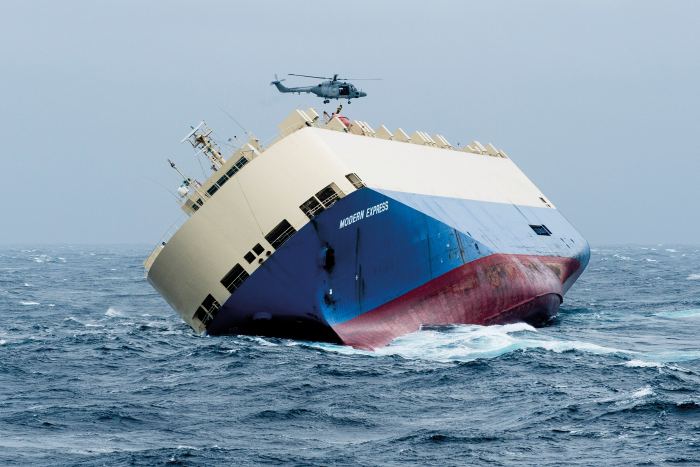
The Modern Express drifted in the Bay of Biscay
OVER THE LAST DECADE, THERE HAS BEEN A STRONG FOCUS ON UPSCALING VESSELS AND THE PERCEIVED LACK OF FACILITIES TO DEAL WITH THEM IN EMERGENCY SITUATIONS.
Does it help SMIT Salvage to be part of Boskalis during incidents like these?
“In general, our counterparts seem to focus mainly on ’hardware’, however vessels and equipment are useful only when used intelligently. The combination of the right tools in the hands of the right people is unbeatable! The main benefit for SMIT Salvage of being part of Boskalis is that the group has a vast number of experts from many different fields. The spread of Boskalis activities and colleagues around the world is another major asset that we can rely on when local support and equipment is of added value during a salvage operation. The Boskalis Board of Management and our colleagues live, eat and breathe projects. Everyone understands the challenges that we face and they give us their full support.”
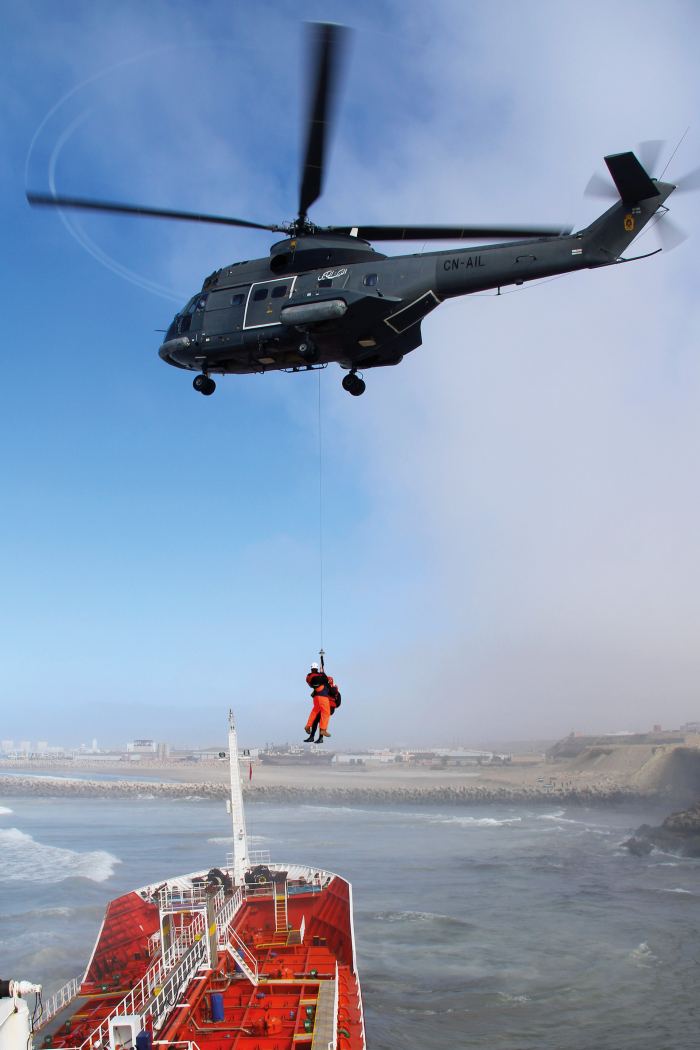
“Looking at our competitors, the sheer financial backbone of the company is also crucial. The Maersk Honam job, for example, represented a huge cash drain in the first few weeks of the operation and not many companies are able or willing to put such an enormous sum on the line. We have very short lines of communication here and the management immediately decided to support Maersk.”
THE MAIN BENEFIT FOR SMIT SALVAGE OF BEING PART OF BOSKALIS IS THAT THE GROUP HAS A VAST NUMBER OF EXPERTS FROM MANY DIFFERENT FIELDS.
SMIT Salvage has been awarded a second major contract from the U.S. Navy?
“Yes. Since the mid-eighties, we have been had the Ocean Engineering, Supervisor of Salvage and Diving (SUPSALV) contract for Zone C, that covers the area from the Suez Canal to the date line. And now we have been awarded Zone B from the date line to the west coast of the Americas.”
“SMIT Salvage was involved in, among others, the operation to assist the USS John S. McCain when she was involved in a collision with a merchant ship in 2017. The Navy’s standards and criteria for awarding these contracts were quite challenging. We were pleased to have the opportunity to showcase what we are capable of as a company and we are very proud to be given the responsibility for covering two-thirds of the globe.”
With a history dating back to 1842, how does SMIT Salvage show leadership in the industry?
“At an industry level, we are a long-standing and active member of the International Salvage Union, which represents salvage companies in discussions with shipowners, underwriters/P&I Clubs and authorities and cooperates on the main issues affecting these parties in a salvage case. Examples are SCOPIC, updates to the Lloyds Open Form, BIMCO’s suite of wreck removal contracts and the EU Guidelines for ports of refuge.”
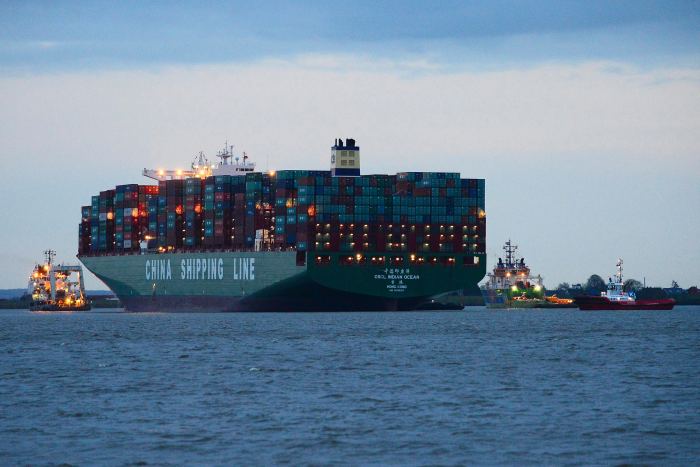
Container vessel Indian Ocean grounded in the Elbe, Germany
“We have always been at the forefront of technological developments and we have a track record of many ‘firsts’, such as our cutting wire system, our oil-recovery systems, self-contained dive systems, container fire equipment and operational intelligence software. And we have also led the way in application on projects like the Kursk, Ehime Maru, Tricolor, KOEM, Baltic Ace, Modern Express and Maersk Honam. This is also why we are active in The Society for Gas as a Marine Fuel, where we have played an important role with our sister company SMIT Lamnalco in the development of the guidelines for salvage operators handling LNG in emergencies.”
How important is it to tailor solutions to your clients?
“It’s vital. And it demands a lot of flexibility from our people because we serve the entire industry: from major container lines and oil majors to smaller operators, all of them with their own risk profile backed by their underwriters. We tailor our services to our clients’ exposure and wishes. We do all we can to understand their culture, business environment, and their concerns, and we work with them to achieve the optimal solution. We have to understand what is important to our clients and help them to minimize the effects of an incident on their business. With these new horizons – the era of the supersized ships – SMIT Salvage is ready to execute even the most challenging salvage projects. As we said to Maersk – ‘we’ll be there!’”
WITH THESE NEW HORIZONS – THE ERA OF THE SUPERSIZED SHIPS – SMIT SALVAGE IS READY TO EXECUTE EVEN THE MOST CHALLENGING SALVAGE PROJECTS.
How is SMIT Salvage preparing the organization and services for the exciting future of autonomous and semi-autonomous vessels?
“Well, as I said, we aim to be at the cutting edge of developments in shipping and, with Boskalis being a major shipowner as well, we have already looked into alternative fuel systems and we are now supporting underwriters who need to assess the risks associated with operating autonomous and semi-autonomous vessels, as well as owners looking at developments in that area. Our people are naturally curious about the technological developments in shipping, not least because we want to be ready when we get the call! By getting involved early on and looking at design and operations from a salvage perspective, we hope to work towards solutions which minimize business disruption as well as environmental impact and provide a cost-effective response in the case of an emergency.”
